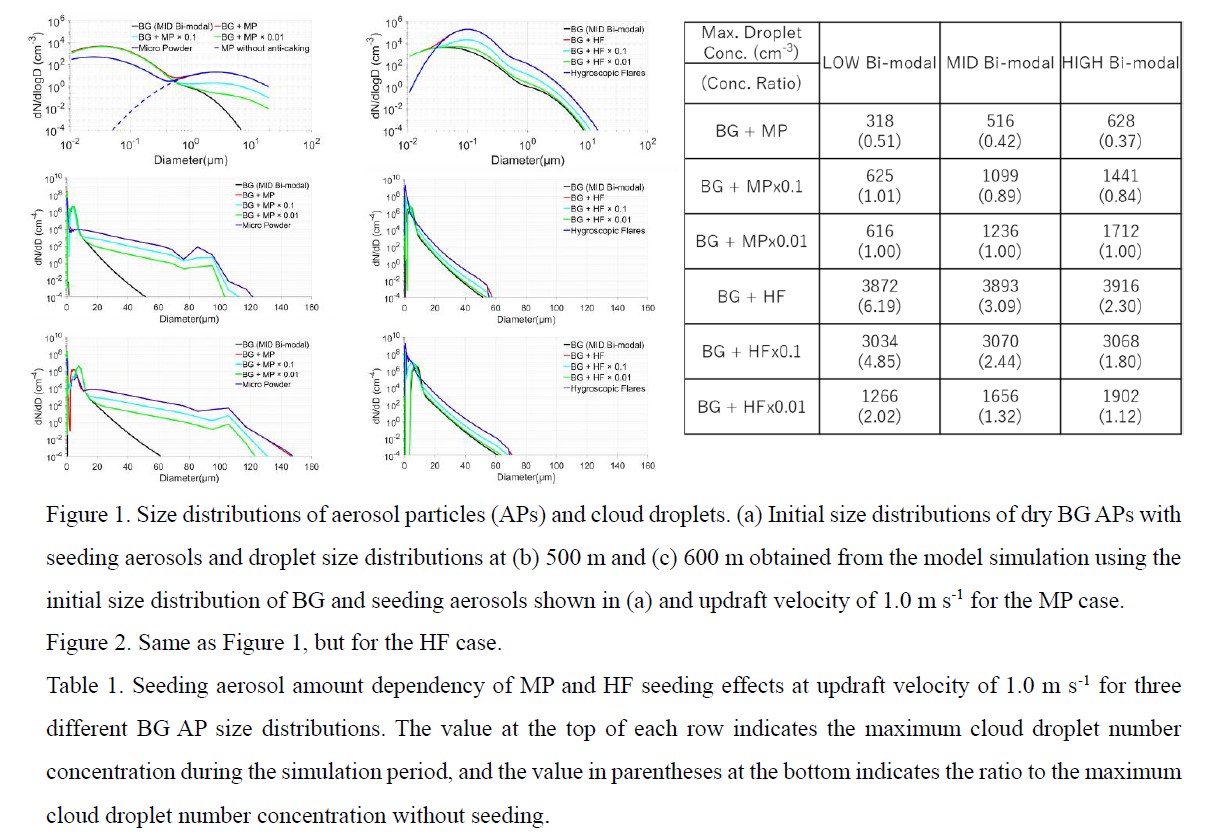Graphical Abstract
Kuo, W.-C., K. Yamashita, M. Murakami, T. Tajiri, and N. Orikasa, 2024: Numerical simulation on feasibility of rain enhancement by hygroscopic seeding over Kochi area, Shikoku, Japan, in early summer. J. Meteor. Soc. Japan, 102.
https://doi.org/10.2151/jmsj.2024-021
Early Online Release
Graphical Abstract
Plain Language Summary: Hygroscopic seeding is a technique potentially suitable for increasing precipitation from warm, convective clouds during summer. The effects of salt micro-powder (MP) and hygroscopic flare (HF) seeding on the initial cloud microphysical structures were investigated using a detailed bin microphysics parcel model with background atmospheric aerosol data collected on the windward side of the target area and seeding aerosol data collected from the coordinated flights of seeding helicopter and in-situ measurement aircraft.

Highlights:
- Cloud droplet size distributions were broadened, and the onset of raindrop formation was accelerated by MP and HF seeding, although MP seeding showed more notable seeding effects than did HF seeding.
- Based on the relationship between the increase/decrease ratios of the cloud droplet number concentration and of the surface precipitation by hygroscopic seeding obtained in previous studies, MP seeding had a positive seeding effect, whereas HF seeding had a negative effect.
- Since seeding a large amount of MP (NaCl) is necessary to enhance precipitation substantially, it is essential to consider the environmental impact.






